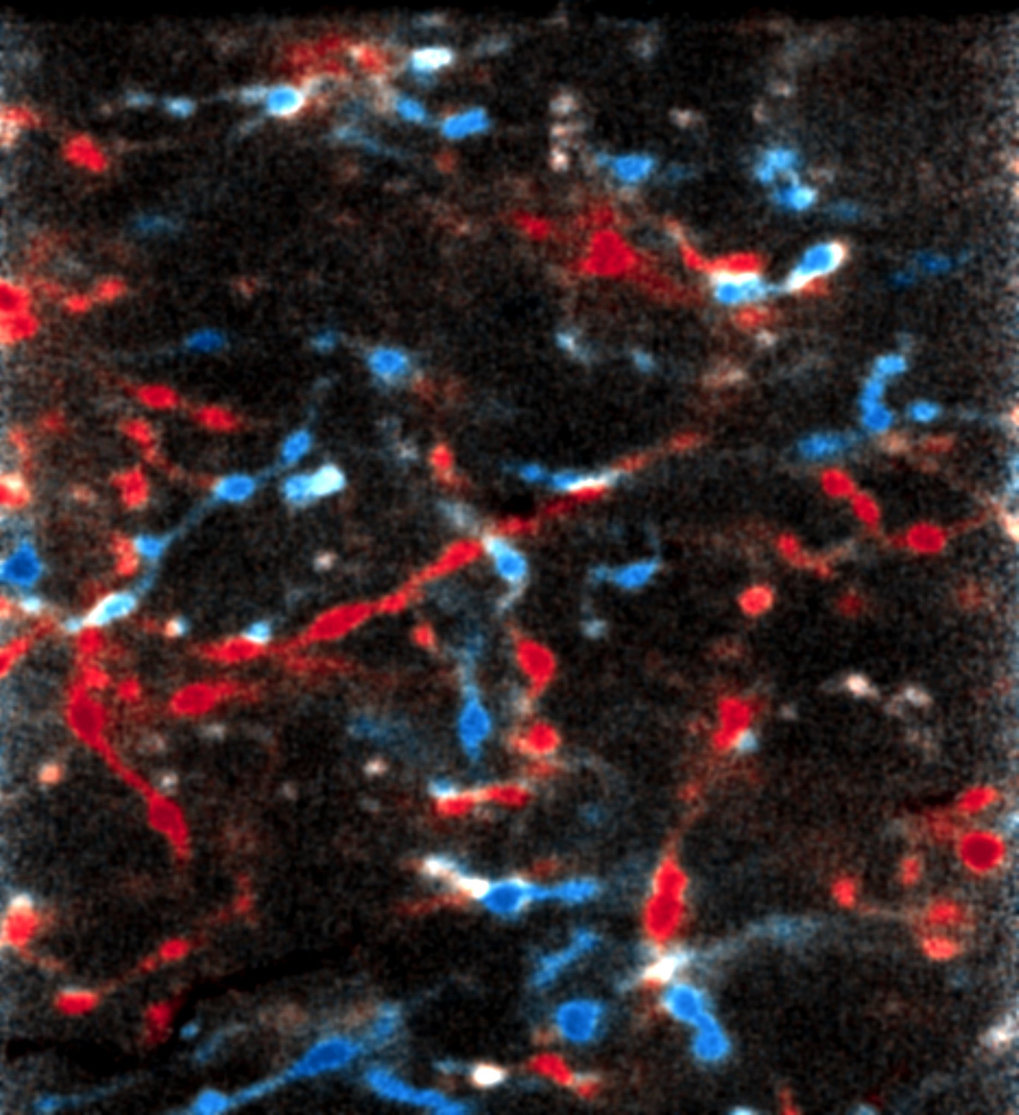Thalamus helps the cerebrum with learning

The cerebral cortex is where we learn and think, form impressions of our environment, control conscious behaviour, and store memories. According to the textbooks, the upstream regions of the brain like the thalamus only contribute to these processes by forwarding information from the sensory organs to the corresponding regions of the cerebral cortex and filtering the information, if necessary. Scientists from the Max Planck Institute of Neurobiology have now shown that the textbook account will have to be revised in part. In the mouse brain, at least, the thalamus appears to play a considerably more active role in visual processing in the context of learning than was previously assumed.
A young brain has much to learn – including how it should interpret information from both eyes and collate it into a meaningful image of the environment. Hence, the cells in the visual cortex establish connections with each other during brain development to enable the optimum processing of visual environmental stimuli. In some cases, however, the signals from one eye do not correspond with those from the other eye, for example in children with strabismus. This can result in the incorrect “wiring” of the eyes to the cerebral cortex. The resulting visual weakness can often be corrected by temporarily covering the dominant eye. If this is done during the critical phase for the development of visual processing, the cells alter their connections, and the brain area responsible for the dominant eye receives signals from the uncovered, weaker eye.
The brain can thus learn to process the visual information differently – an insight that is applied successfully through the use of eye patches in children with strabismus. These well-researched processes in the visual cortex have also been used for many years as a model for the study of learning mechanisms in the cerebral cortex based on the example of the mouse brain.
When scientists from Tobias Bonhoeffer’s department examined the activity of neurons from upstream brain areas, in particular the thalamus, during a temporary closure of the eye, they made an astonishing discovery: these cells did not simply relay information from the eyes to the cerebral cortex but also altered their signals in response to the eye closure. “This was completely unexpected, as it has been believed for over 50 years that the thalamus only forwards information and is not actively involved in learning processes,” reports Tobias Rose, leader of the study.
